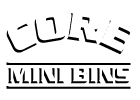Top Trendy, Exciting New Recycling Tech Making Waves in 2020

Every year, the world pushes forward with tech discoveries, recycling processes, and facilities providing new methods to rehabilitate materials that would otherwise be sent to the landfill. As we’re still early on in 2020, we’ve decided to put together a quick countdown of new, exciting recycling technologies that are at various stages of development. These new, high-tech advancements have the potential to make some big changes to how Canada recycles.
Rare Earth elements recycling
We likely face a future where we rely on technology to clean up our messes despite the most obvious approach being to cut down on waste as a whole. Companies like Apple have dedicated significant parts of their R&D to finding how to build electrical components from recyclables. The iPhone 11 impressively used a set of 17 metals recycled for its phones, a feat which experts deemed impossible to do years earlier. The world is changing and with that, products using recycled materials face the brightest future.
Nuclear waste recycling
One of the most impressive recycling tech discoveries in the last six months is a process which recycles nuclear waste. Previously believed to be useless and incredibly dangerous, at the University of Bristol researchers have been able to transform nuclear waste into batteries with capacity to provide power for 1,000s of years. The technology is still in its developing stages, infusing nuclear waste extracted from graphic blocks with wafer-thin diamonds to create a battery which could be used in devices like hearing aids and pacemakers, or even to power spacecraft.
Robotic arm sorter
Various versions of robotic arm sorters are being used at recycling facilities all over the world. Recently built facilities have an even more advanced robotic arm sorter with the capacity to recognize different materials and essentially complete the job without human intervention. Although this sort of automation has some worried in the waste management industry, it demonstrates a lesser cost for facilities to operate which could equate to more facilities in the decades to come.
Apple’s Daisy
Daisy is a material sorting technology invented by Apple. It sorts through more than 200 iPhones every hour, recycling every one for the precious metals utilized in their design. Metals are recyclable because they don’t lose their properties when you recycle them. In an era, where there’s so much electronic waste, there’s a growing interest in metal sorting and material procurement that avoids losing these metals to landfills where they don’t belong.
Li-Cycle lithium battery recycling processes
As an operator, Li-Cycle has come up with a way to recycle between 80 to 100 percent of batteries through mechanize size reduction and material recovery. The process begins by shredding down the packs and battery cells. Then a hydrometallurgical process is used take what’s recyclable after the fact, after a chemical reaction. This process turns hazardous waste into non-hazardous waste. Absolutely spectacular!
Tyton BioSciences clothing recycling
The fashion industry creates a lot of clothing waste on an annual basis but through tech and processes like that at Tyton BioSciences, raw materials like cotton pulp and polyester can be retrieved and made into new fabrics. Using hydrothermal processes involving water, heat and pressure, this is one of the cleanest ways to recycle fabrics in this way and could expand in the years to come to include virtually any clothing type. If this ends up being the case, this would eliminate the trillions of pounds of clothing waste generated in any given year.
Pyrowave plastics recycling
As one will find a lot of recycling tech is targeting the recycling or processing of plastics. The Pyrowave corporation has come up with a way to regenerate non-recyclable by breaking them down into ‘monomers’ to then be made into new resins that are near identical to virgin plastics. For traditional non-recyclable plastics like PP, PE, PS, and others, this is a major breakthrough suggesting that maybe one day in Canada there may be no such thing as non-recyclable plastic.
Flameless oxy-combustion
Originally designed for the oil and gas industry, flameless oxy-combustion could potentially help recycle unsorted plastics. The process of flameless oxy-combustion produces water, energy, and pure carbon dioxide that is not emitted into the atmosphere. For non-recyclable mixed plastics, this may prove to be a way to regain the energy lost in the manufacturing of plastics while converting the material into usable materials.
UBQ
UBQ is another company that’s focused on producing eco-friendly plastics from recycled materials. UBQ uses unsorted household waste to do so however, converting it into eco-sustainable, biodegradable thermoplastics which can be applied in commercial and industrial projects. This is alternative to the petroleum-based plastics that are used today in such applications. By creating natural resources from general items guaranteed to be sent to the landfill, you avoid harmful gases from decomposition, landfill space given away, and more. The company’s process is believed to save 11.7 kg of carbon dioxide equivalents for every 1 kg of plastics produced.
Loop
Loop is an initiative launched by TerraCycle in 2019 that takes reusable containers we typically throw out – things like mayonnaise containers and Tide detergent containers – and gives them back to the manufacturer to be refilled and sold back into the consumer base. This is a great example of a recycling process that reduces what households are putting into the waste stream.
Pyrowave styrofoam recycling
Pyrowave, in addition to recycling plastics, has a chemical process by which to break down styrofoam and remanufacture it into new styrofoam. The polystyrene molecules break down via microwave-like technology, resulting in styrene which can then be chemically processed and returned in polystyrene form. Considering how more than four fifths of the styrofoam we use in Canada ends up in our landfills, this is an ideal solution to cut down on yet another source of waste.
This is just a little insight into where recycling technologies are at in the first half of 2020. Development continues to speed up on creating products made entirely from recyclables in addition to finding ways to recycle what was formerly thought of as impossible to recycle. For the first time in over a century, a true zero waste society here in Canada seems very possible. Core Mini Bins supports sustainable waste disposal practices, focusing on recycle, refuse, and landfill diversion. Don’t hesitate to speak with one of our representatives for waste disposal, dumpster rentals, junk removal, and waste management services.


